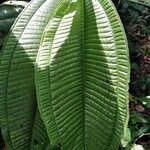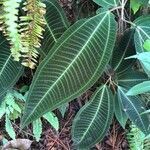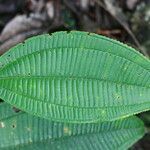A tree. It grows 15 m tall. The leaves are large and can be 1 m long. The leaves are purple and green with white veins. The flowers are in large panicles. They are white or pink. The fruit are small and purple. They are about 1 cm across. They are filled with many very small seeds.
Pending.



